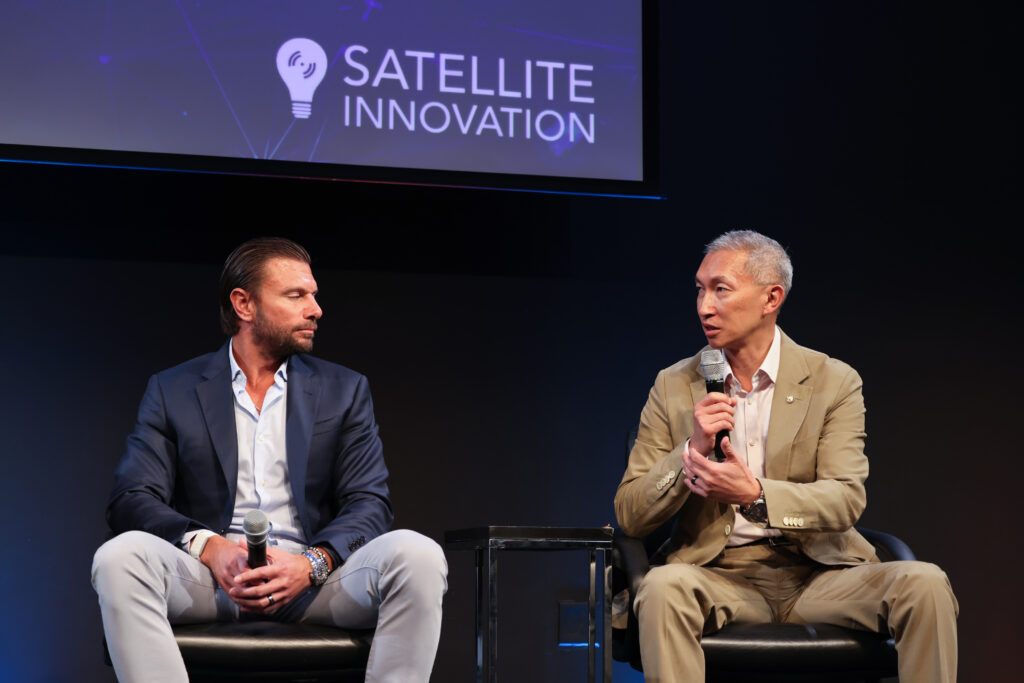By Chris Forrester

Direct-to-Device (D2D) is the hottest of hot topics and a panel discussion at Silicon Valley Space Week’s Satellite Innovation event brought the challenges and opportunities into sharp focus.
The panel, chaired by Lisa Dreher (MD/Guideforce) examined today’s status of the D2D sector, and where it was headed and in particular successfully monetising the D2D technology and its target $30 billion of reported potential business. She mentioned the ‘missing’ players – at least as far as the panel was concerned – and specifically mentioned Starlink and AST SpaceMobile.
Kevin Cohen (Commercial Director, Direct-To-Device, Viasat Inc.) and which operates in L-band, said Viasat was creating new businesses and the potential of hundreds of millions of devices connected via satellite. He said that spectrum is key and thus there were possibilities for competitive cooperation between operators. “We also need open standards, and we are pushing for this very heavily.”
Greg Pelton (CTO, Iridium Technologies) said that one element that could not be ignored was that users would not be getting a 5G experience from satellite, and it was at the moment it was uncertain as to how consumers would react to satellite-delivered connectivity. “Can the investments needed be justified by the revenue prospects? We are now finding that Moore’s Law is impacting satellites, which is encouraging. Non-geo operators need access to worldwide spectrum because their satellites move. We have that access, but we see impediments for some operators in getting to profitability.”
Pelton also said that regulation permissions was far from proven. “The past saw terrestrial spectrum and satellite spectrum and never the twain would meet. I think it is going to take some years for these problems to be resolved. Will it just be emergency use, from space?”
Vijay Krishnan (VP/Strategic Partnerships, Skylo Technologies) said that regulation, spectrum access as well as technology each needs to come together. There’s another problem: think of those markets where users are paying less than $5 per month for their cellular use. It can be even lower in some African nations, and these challenges are very different to the [wealthy] Americas and Europe. Minimising friction with MNOs is critical. We want to augment their capability.”

Rich Pang (Head of Business Development, Amazon Kuiper Gov’t Solutions) explained that Kuiper was a little late in launching its rockets (now scheduled towards mid-to-end January 2025). But he also said that Amazon was not initially targeting direct-to-consumer with its first-generation offering. “The easier we can make the transition from the various networks the better we’ll be placed.”
